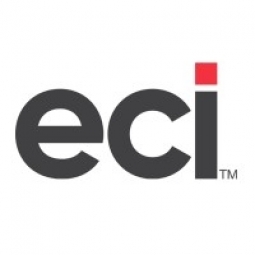地区
- America
国家
- United States
产品
- E2 Shop System
实施规模
- Enterprise-wide Deployment
影响指标
- Productivity Improvements
- Digital Expertise
技术
- 功能应用 - 企业资源规划系统 (ERP)
适用行业
- 汽车
- 医疗保健和医院
适用功能
- 质量保证
服务
- 系统集成
- 培训
关于客户
PF Technologies 是医疗和汽车行业机器人涂层和装饰领域的领导者。与专注于零件制造或工具制造的传统车间不同,PF Technologies 专注于生产优质产品,同时遵守严格的联邦和机构法规。由于这些法规,该公司的流程独特且受到更多限制。PF Technologies 总经理 Bill Rice 自 1993 年以来一直在该公司任职,并在设计和管理该公司的第一个访问系统方面发挥了重要作用。
挑战
PF Technologies 是一家专门为医疗和汽车行业提供机器人涂层和装饰的公司,其过时的管理软件给该公司带来了挑战。该软件由公司总经理 Bill Rice 于 1993 年设计和管理,现已无法跟上业务日益复杂的步伐。系统开始每天崩溃,原来的程序员也无法进行必要的更新。该公司的独特流程受到联邦和机构法规的严格监管,因此需要一个强大而复杂的系统来满足其独特需求。
解决方案
PF Technologies 选择 E2 Shop System 作为其新的管理软件。之所以选择 E2 系统,是因为它在用户友好性和复杂性之间取得了平衡,能够处理 PF Technologies 业务的独特方面。为了过渡到新系统,该公司将 E2 与旧系统并行运行了两个月。这使他们能够学习如何输入零件并熟悉软件,而不会中断日常运营。两个月后,他们能够关闭旧系统并完全使用 E2。E2 系统设计合理,所有内容都紧密相连且易于访问。它允许 PF Technologies 根据他们所服务的行业和客户定制表格,并且它足够强大,可以处理其客户行业所需的法规和质量控制。
运营影响

Case Study missing?
Start adding your own!
Register with your work email and create a new case study profile for your business.
相关案例.

Case Study
Integral Plant Maintenance
Mercedes-Benz and his partner GAZ chose Siemens to be its maintenance partner at a new engine plant in Yaroslavl, Russia. The new plant offers a capacity to manufacture diesel engines for the Russian market, for locally produced Sprinter Classic. In addition to engines for the local market, the Yaroslavl plant will also produce spare parts. Mercedes-Benz Russia and his partner needed a service partner in order to ensure the operation of these lines in a maintenance partnership arrangement. The challenges included coordinating the entire maintenance management operation, in particular inspections, corrective and predictive maintenance activities, and the optimizing spare parts management. Siemens developed a customized maintenance solution that includes all electronic and mechanical maintenance activities (Integral Plant Maintenance).

Case Study
Hospital Inventory Management
The hospital supply chain team is responsible for ensuring that the right medical supplies are readily available to clinicians when and where needed, and to do so in the most efficient manner possible. However, many of the systems and processes in use at the cancer center for supply chain management were not best suited to support these goals. Barcoding technology, a commonly used method for inventory management of medical supplies, is labor intensive, time consuming, does not provide real-time visibility into inventory levels and can be prone to error. Consequently, the lack of accurate and real-time visibility into inventory levels across multiple supply rooms in multiple hospital facilities creates additional inefficiency in the system causing over-ordering, hoarding, and wasted supplies. Other sources of waste and cost were also identified as candidates for improvement. Existing systems and processes did not provide adequate security for high-cost inventory within the hospital, which was another driver of cost. A lack of visibility into expiration dates for supplies resulted in supplies being wasted due to past expiry dates. Storage of supplies was also a key consideration given the location of the cancer center’s facilities in a dense urban setting, where space is always at a premium. In order to address the challenges outlined above, the hospital sought a solution that would provide real-time inventory information with high levels of accuracy, reduce the level of manual effort required and enable data driven decision making to ensure that the right supplies were readily available to clinicians in the right location at the right time.











